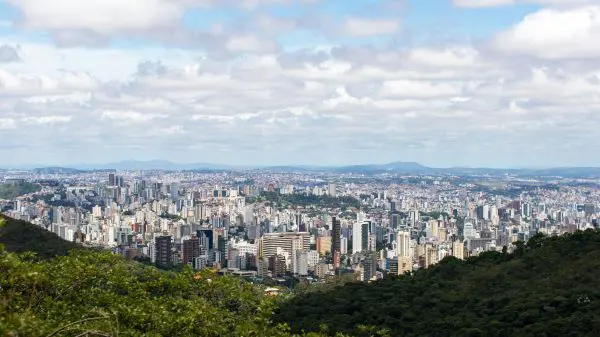How can we deal with urban sprawl?
Posted on: 20 March, 2025

Urban sprawl is significantly impacting society, the economy and the environment. Here’s why (and how) urban planners should address it.
The human race is growing exponentially. In November 2022, the global population reached a staggering 8 billion, and this rapid growth is expected to continue, reaching 9.7 billion by 2050 and nearly 10.4 billion by the mid-2080s. This urban growth has been driven by several factors. For one thing, the average human is living longer, and more people are surviving to reproductive age than ever before.
Our rising population has led to increased urbanisation and an acceleration in migration, resulting in what has been named ‘urban sprawl’. Data collected between 1990 and 2014 found that urbanisation increased by 95% in 24 years, with many built-up areas growing by as much as 28 km2 per day. Today, over 4 billion people live in urban areas across the globe – over half the world’s population.
Increased urban sprawl is having a significant impact on the environment, and will have far-reaching implications for future generations, but how can we deal with it effectively?
What is urban sprawl?
Urban sprawl (also referred to as suburban sprawl) is the expansion of towns or cities into rural or previously undeveloped land. This happens when space is needed to accommodate the growing population and those wishing to migrate from high-density areas to low-density suburbs.
Urban sprawl is often characterised by low-density housing developments that stretch away from an urban centre. The lack of walkable spaces, amenities and public transport systems in these developments lead to an increased reliance on personal vehicles. Some of the other key characteristics associated with urban sprawl include:
- Agricultural land surrounding busy cities is bought to be developed on
- Large areas that are entirely dedicated to new-build developments, usually with curved roads, cul-de-sacs, big streets and motorways
- Single-family, smaller properties on large plots of land that are spaced further apart
- Large gardens and suburban lawns, parks, country clubs and golf courses
- Retail parks and large collections of commercial buildings like shopping centres
- Strip development where ‘ribbons’ of residences or commercial properties line roads and extend away from urban centres
- An undefined edge between urban and rural spaces
Learn more: All buildings great and small: the spectacular rise of tiny homes
What causes urban sprawl?
While a growing population is a key contributing factor to urban sprawl, there are several other reasons this trend is creeping into suburban spaces:
1. The cost of land
The suburbs and the rural land on the outskirts of cities tend to be more affordable compared to its centres, making it more desirable to buy and develop. This also makes it more affordable for those wishing to buy completed properties.
2. Changes to living standards and lifestyle choices
Those with a higher average income can afford to live outside of the city centres and pay higher transportation costs to commute to work, school or shopping facilities.
Not only this, but those with more money can choose to move out of busy, overcrowded city centres to somewhere with more space and a lower density. Therefore, developers are trying to provide quieter, larger spaces for wealthier buyers.
3. Improper urban planning
Unfortunately, inadequate urban planning has led to congestion, overcrowding, loss of green spaces and a lack of essential services like schools and healthcare facilities. All of this is driving people to seek life outside of urban centres, even if it means having longer commute times each day, as this offers a overall better quality of life.
The Chicago-Area Sprawl of the 1990s is the perfect example of this. The case study from McDonald and McMillen found that new housing developments built near downtown Chicago between 1990 and 1996 showed no clear urban planning or spatial patterns. These properties didn’t have good public transportation like commuter rail stations, highway interchanges or employment centres. This scattered pattern, along with other local factors, contributed to urban sprawl in the area.
Alongside the US, sprawl has also been prevalent in China, a country that has moved 500 million people from rural locations into cities in just 35 years. To take the pressure of urban sprawl from cities of Shanghai and Beijing, China elected to create entirely new municipalities like Xiong’an, while capping the size of established major cities.
4. Improved infrastructure in rural areas
As more is being spent on creating comfortable and attractive infrastructure outside of urban centres, these areas are becoming far more desirable – particularly as many offer larger, greener spaces.
5. Cost of living crisis
With the cost of living on the rise for so many, people are always looking for ways to cut costs and this is easier outside the city. For example, the suburbs often have lower local tax rates when compared to urban centres. Similarly, the cost of public transport continues to rise, making it more affordable to live further away and use personal vehicles to commute rather than getting the train or bus.
What are the consequences of urban sprawl?
There are several reasons why urban sprawl is so problematic. Some of the key consequences of this type of migration include:
Environmental damage and increased pollution
Urban sprawl has negative impacts on the environment, causing air pollution from increased reliance on cars and the use of fossil fuels.
There can also be issues with flooding and water pollution as a result of an increase in impervious surfaces. Plus, land is being consumed and lost at a faster rate than ever before, leading to the loss of habitats and biodiversity.
Social issues
It’s not just the environmental impact of urban sprawl that needs to be addressed – there are also social issues that arise from this expansion like the homogeneity of an area. This means that people of the same income/social group, ethnicity, age, etc. all tend to move to these rural or suburban areas. For example, a shift known as ‘white flight‘ took place whereby white people moved out of city centres in droves during the 1960s and 1970s, leaving more black communities in the centre.
Increased public expenditure
In many cases, infrastructure and urban developments like this are financed using public money. This means that public expenditure is increasing to make urban sprawl possible, which ultimately leads to an increase in public taxes or having to find huge funds of money to keep building.
Dealing with urban sprawl
Through careful planning, policies and practises, we can gradually reduce the proliferation of unsustainable growth in rural spaces. Some of the key ways to tackle urban sprawl in the future may include:
- Designing with nature: Taking cues from nature and using the natural landscape to preserve the environment and sense of community identity
- Adaptive reuse: Reusing or repurposing old structures to preserve and revitalise historic buildings and reduce the need for new builds
- Avoid building cul-de-sacs: The suburban cul-de-sac limits commuter choices, jams arterial roads and doesn’t support the use of public transport or walking
- Plant more trees: Planting trees near paths, car parks, roads, etc. and promoting green spaces can encourage walking and help clean the air
- Bring back corner shops: Small convenience stores can save a five-mile trip to the local supermarket just for a pint of milk. Plus, it’s good for small business owners and the local community
- Implement smart growth policies: Adopting smart growth policies, such as walkable communities, mixed-use developments and limited road construction, is another emerging method of addressing urban sprawl.
Learn more: A guide to 15-minute cities: why are they so controversial?
Of course, one of the biggest ways to tackle this challenge is through urban sprawl reduction policies and initiatives, for example, planning policies and techniques.
Decision-makers can also implement sprawl reduction policies like land development prescriptions, incentive-based techniques and infrastructure-based policies to start tackling this issue.
In summary: dealing with urban sprawl
It’s clear that as the population continues to grow, more housing and development will become a reality. However, understanding the environmental and social consequences of urban sprawl can bring this issue into the limelight.
Through careful urban planning and smart practices, we can begin to tackle the issue in overpopulated areas. And with environmental issues currently at the forefront of many media outlets, urban sprawl reduction policies can help reduce sprawl without compromising any needed development and infrastructure.
By working with nature instead of against it through green infrastructure, we can generate cleaner air and water, protect natural systems, lower costs and generally improve the quality of life for everyone in the area.
Urban planning is an exciting field that has a pivotal role in the design and function of our cities and communities. If you want to have a part in helping the built environment realise a sustainable future, UCEM’s MSc Urban Planning will give you the knowledge, skills and technical understanding you need.
Find out more: MSc Urban Planning – University College of Estate Management





